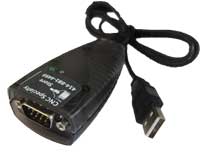Fixture design and work holding considerations for clamping parts
|
Single pallet machine:
The hydraulics, pneumatics and electrical wires going to the fixture can very easily be draped down to the table. They give you the most automation options possible.
Work holding and fixture design for Shuttle type side by side pallet changers:
Integrating shuttle type pallet changers is often difficult when running more than two hydraulic lines. Reason being is there is usually some type of cable track to move the hoses, electrical, and pneumatic lines in and out. This sometimes requires extensive machine modification. Another problem is that in order to get the cable track to move the full length of the machine tool, it must float in mid air. Doing so it is only supported by the cable track construction itself.
The main fixture work holding problems and considerations with shuttle type of pallet changer are:
- Two hydraulics lines maximum, preferably 1 line for single acting fixture
- If robot load- preferably double acting clamps for confirmation of actual clamp positions incase of single actuating clamp malfunction. If clamp unclamp cycle is interrupted there may be some low pressure still being held by P.O. check valve.
- Hydraulic clamp sequencing must be built into the fixture itself
- Preferably P.O. checks on A and B if robot load. Single if no robot load
- Very easy to interface electrical components into fixture if needed
Rotary type pallet changers and fixture design:
Rotary pallet changers can also be a challenge and pretty costly typically from $12,000 to $28,000 for a complete hydraulic clamping system. These type of systems will generally require a rotary union directly in the center of the pallet changers rotation. Some applications do not require a rotary union as they are only able to rotate 180 degrees. These systems will have hoses that rotate 180 degrees with the table. Even in these circumstances a rotary union is preferred. Many times if a pallet changer looses position or zero return. The machine is capable of rotating 360 Degrees. So for extra protection this type is always safest. Some machines are impossible to use a rotary union. As always sequencing valves on the fixture are preferred. Also, if part present air circuit is required then you will need 2 more ports in the rotary union for this option.
Why will it be more costly? What are the drawbacks?
- Costs of custom rotary unions are often needed if exceeding 6 pass. Mounting area in machine tool may be limited.
- Higher costs of integrating the package to the machine.
- If sequencing is done at fixture, all clamping circuits will be the same and ladder logic does not have to be rewritten for different fixtures.
Other Work holding considerations:
Part present circuit- Usually the best practice is to add a part present circuit with air not electrically. Electrical components in the machining area will often cause problems. Coolants tend to eat up seals and have chemical reactions with electrical components.




